The Independent's journalism is supported by our readers. When you purchase through links on our site, we may earn commission. Why trust us?
Microsoft surface laptop studio review: A transforming, portable Windows PC for creatives
With a folding display that drops down to become a tablet, the brand’s latest offers a new way to interact
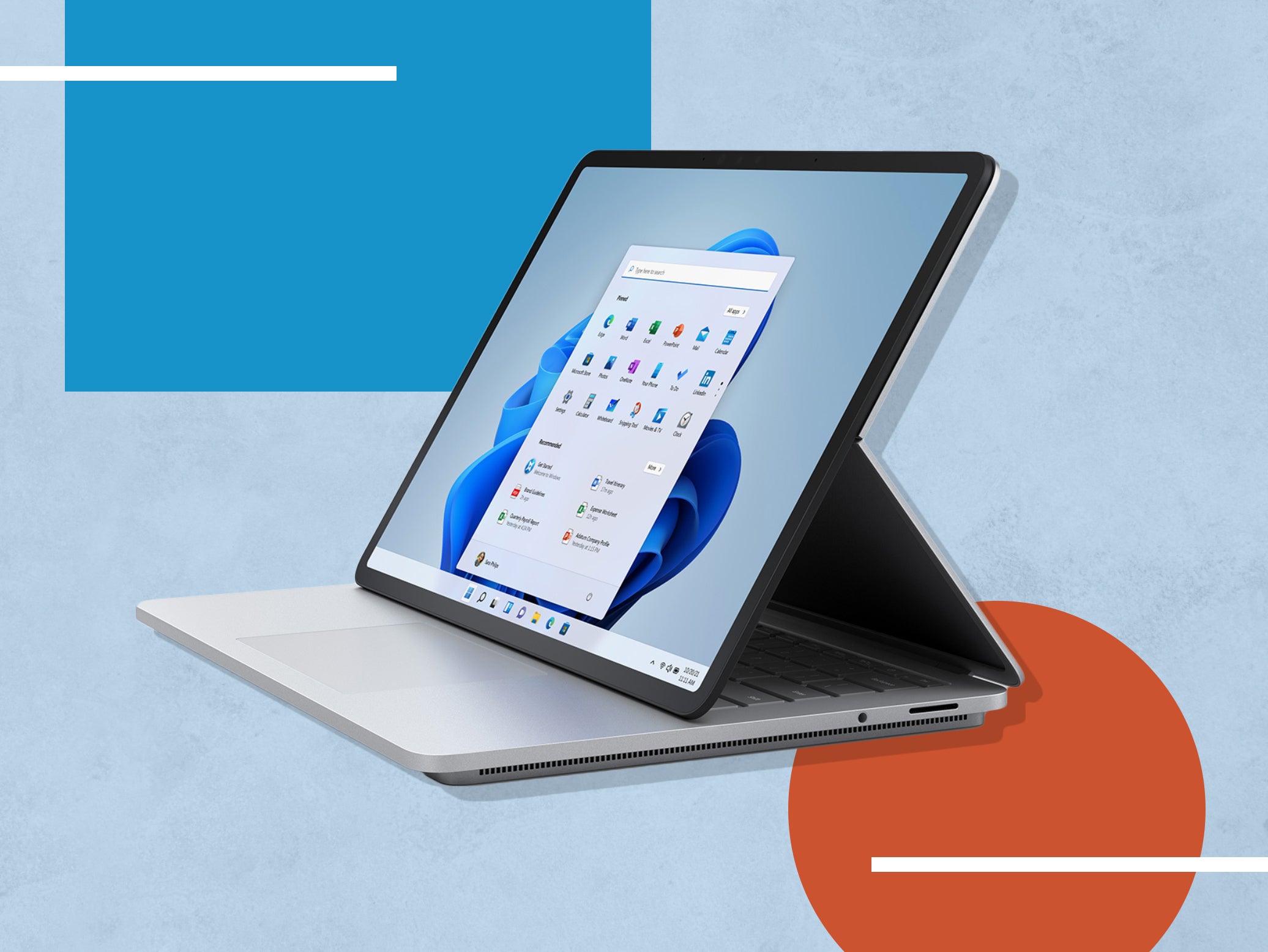
The surface laptop studio is a transformer. At first glance it might look like every other high-end clamshell laptop going – a clean-edged and precision-engineered portable PC in the vein of a MacBook pro – but it does something very unusual. The floating screen can be pulled forward to sit in front of the keyboard at 45 degrees, and forward again to fold down flat like a tablet.
This solves one of the most obvious problems with touchscreen and stylus controls on laptops: that you have to physically reach across a keyboard to interact with the display. For a 3:2 ratio laptop like the one found on the surface laptop studio, which has a taller screen and so a deeper keyboard, it’s especially useful to be able to pull the screen towards you. The now-retired surface book range of laptops had a similarly tall display and a touchscreen, though you’d be hard-pressed to find anyone who ever used touch controls to interact with it.
It’s a small point for pen users, but one that matters: the surface laptop studio features the best stylus placement of any laptop we’ve tested. Microsoft’s pen, the surface slim pen 2, magnetically snaps into place under a neat lip that runs around the main body of the device. It’s out of the way but easily retrieved, and doesn’t ping off when you slide the laptop into a backpack.
Fun screen tricks aside, the surface laptop studio is a creativity-focused laptop with tonnes of processing power, enough memory to juggle enormous files without breaking a sweat, and a stunning 120Hz display that feels more fluid and responsive than most other screens we’ve tested. It’s Microsoft’s most powerful and technologically advanced laptop – a flagbearer for portable Windows devices – and has a suitably big price tag to match.
How we tested
We swapped out our usual laptop for the surface laptop studio for a few weeks, alternating between working from home and hotdesking at the office. We ran the laptop through our typical workday, using it as our main PC for writing, editing, emailing, video conferencing and web browsing.
Benchmarking was achieved using PCMark 10, and the surface studio pro’s creative capabilities were tested using Adobe Creative Suite software to edit and render video, picture and audio files. A whole lot of Elden Ring was played on the surface laptop studio, as well as Forza Horizon 5, Subnautica, Snowrunners and older PC games.
Read more:
Microsoft surface laptop studio: From £1,449, Microsoft.com
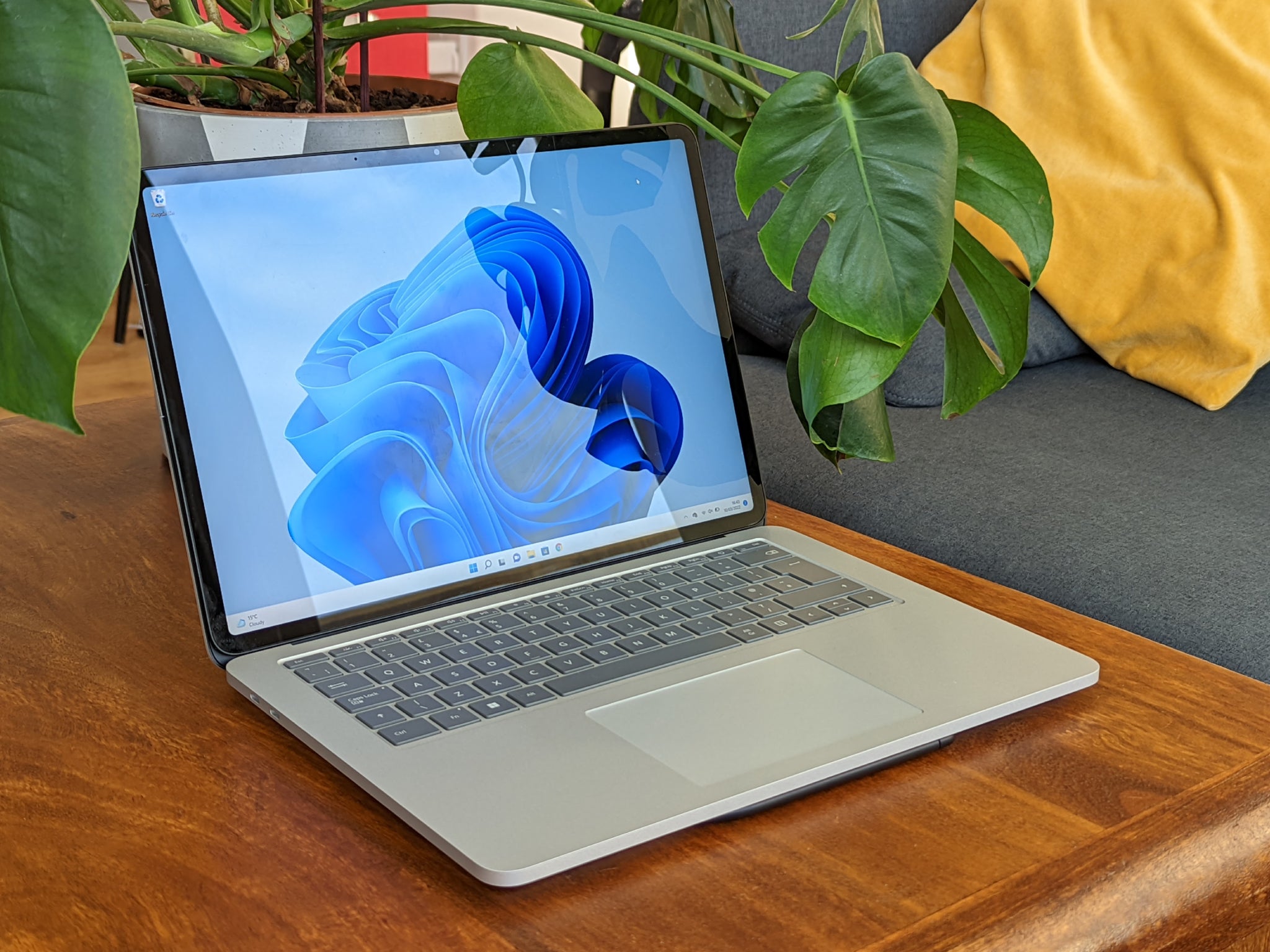
- CPU: Intel Core i5-11300H / Core i7-11370H
- Graphics: Integrated Intel Xe / Nvidia GeForce 3050 Ti
- RAM: 16GB / 32GB
- Screen: 14.4in, 2400 x 1600, 120Hz
- Storage: 256GB to 2TB
- Connections: Two Thunderbolt 4 USB C slots, headphone jack, Surface Connect port for expansion and accessories (not included)
- Pros: Beautiful screen, clever design, powerful performance
- Cons: Only has USB C ports, weak battery life
Design
The surface range has always been exceptionally good-looking. Whereas most Windows laptops are built by third-party manufacturers and littered with holographic Intel stickers and various bits of corporate branding, the surface range has stood alone as Microsoft’s shining example of what the ideal Windows laptop could look like. Sure, it’s easy to see the muted grey chassis, sharp industrial contours and clean chiclet keyboard as inspired by Apple’s own laptops, but the surface range has always differentiated itself. The surface book sported a spine-like curved hinge, and now the surface laptop studio can be reconfigured like origami.
Read more: Best VPNs for streaming on Android, iPhone and more
You might think all of this folding and flexing would leave the surface laptop studio feeling wobbly, but this thing is solidly built. Shifting the screen from its traditional position to a more canvas-style setup is a matter of gently gripping the top of the display and popping it out from the base, an action that feels fluid and robust enough that you can confidently do it over and over again without worrying you might Hulk out and tear the laptop in half. The mechanism doesn’t add any noticeable thickness to the screen either. It’s as thin as any traditional laptop screen.
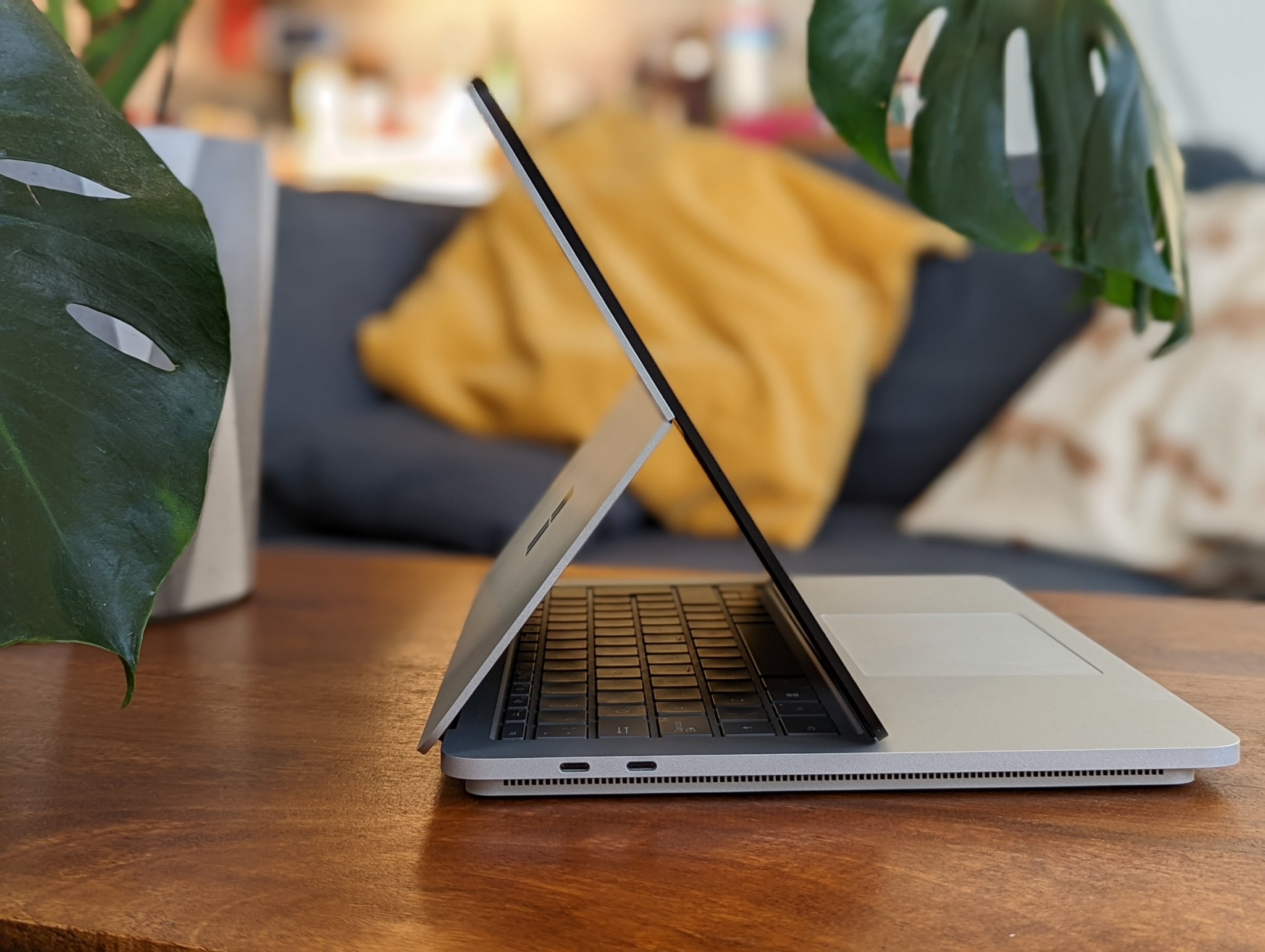
Magnets gently snap the screen into place once you’ve pulled it past the keyboard, so that in front of you is just the trackpad and the display tilted at 45 degrees. This configuration isn’t very useful for using the pen – it feels more natural to write on the screen once it’s as flat as it can go – but we found it comfortable for gaming and watching videos. When the screen is flat, it’s too chunky to be picked up and used like a regular tablet, but it’s ideal for note-taking and graphic work.
The surface slim pen 2 lives just out of sight in a hidden lip below the trackpad, which runs all the way around the laptop’s base. This stepped design helps to disguise the overall thickness of laptop’s base, and has the added benefit of looking eerily like the laptop is hovering half a centimetre above your desktop. The surface laptop studio is 18.9mm thick and weighs around 1.8kg — it’s no lightweight ultrabook by any measure, but it’s still portable and compact enough to go wherever a lighter laptop can. That lip also houses the exhaust ports for the surface laptop studio’s twin heat-dispersing fans, which are noticeable but not noisy when the processors are working at full pelt, and perfectly silent otherwise.
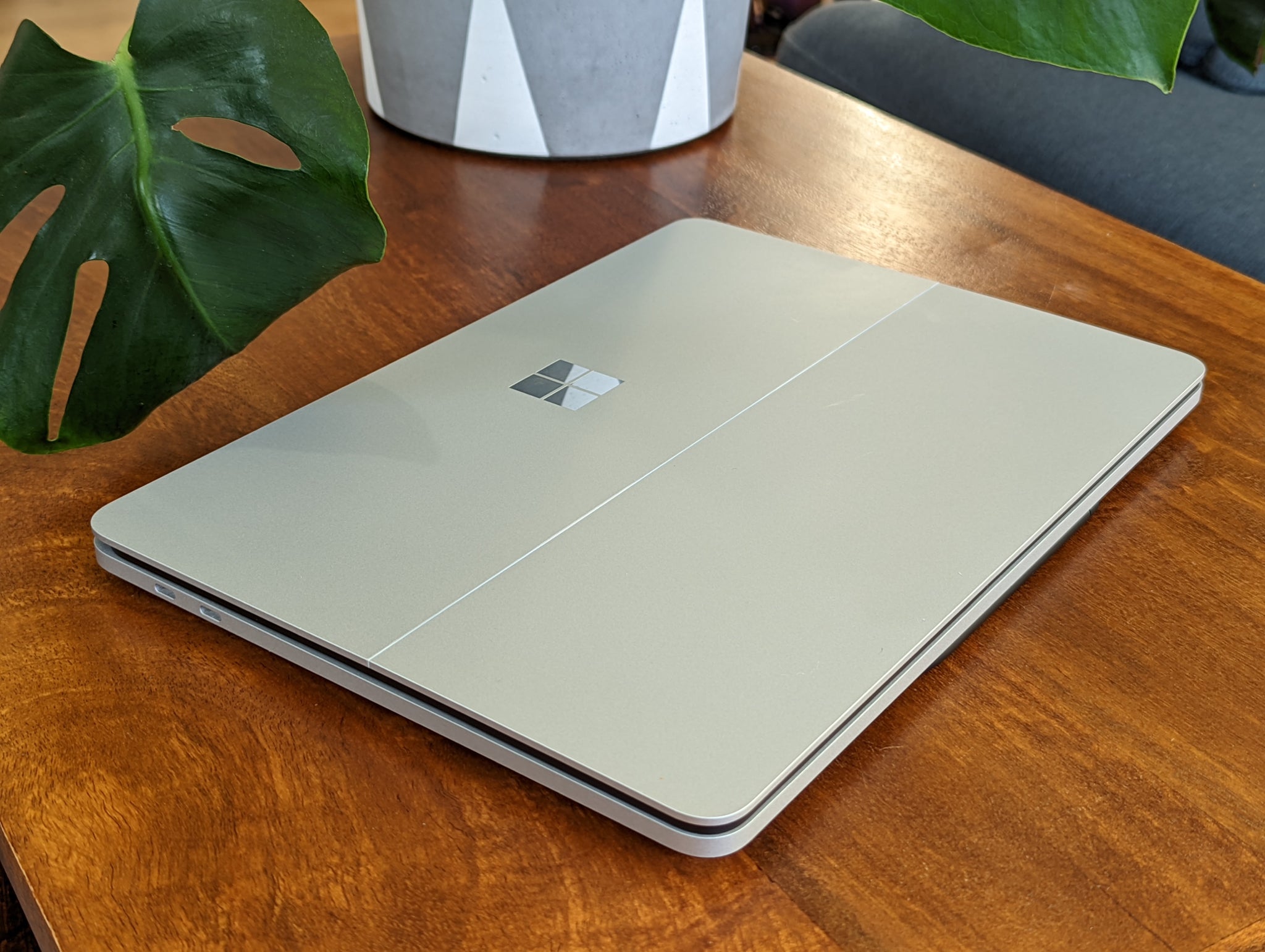
As with the old surface book laptops the studio replaces, the keyboard is top-tier. It’s comfortable to work on for long periods, and the textured magnesium-aluminium casing feels nice under the wrists. There’s a certain softness to the metal that’s difficult to convey in words. If I had to choose a metal to sleep on, it would be whatever the surface laptop studio is made out of.
Display and audio
Even when it’s not doing backflips, the screen on this laptop is impressive. It’s bright and vivid, with rich colours and a deep, 1500:1 contrast. Running at a 2400 x 1600 resolution means it’s crisp too, but what really makes this display shine is the silky smooth 120 frames-per-second refresh rate. On paper, this means the screen updates twice as often as a standard 60Hz display, meaning your eye sees twice as many frames of animation as you drag windows around, open and close programs or simply move the mouse around on screen.
That might sound like an imperceptible upgrade, but the resulting effect is a laptop that immediately feels more responsive and zippy, like graduating from standard definition to high definition. The 120Hz refresh rate pairs well with the stylus too, giving drawing and note-taking a more realistic feel as your lines appear on screen beneath the pen tip a fraction of a second more quickly.
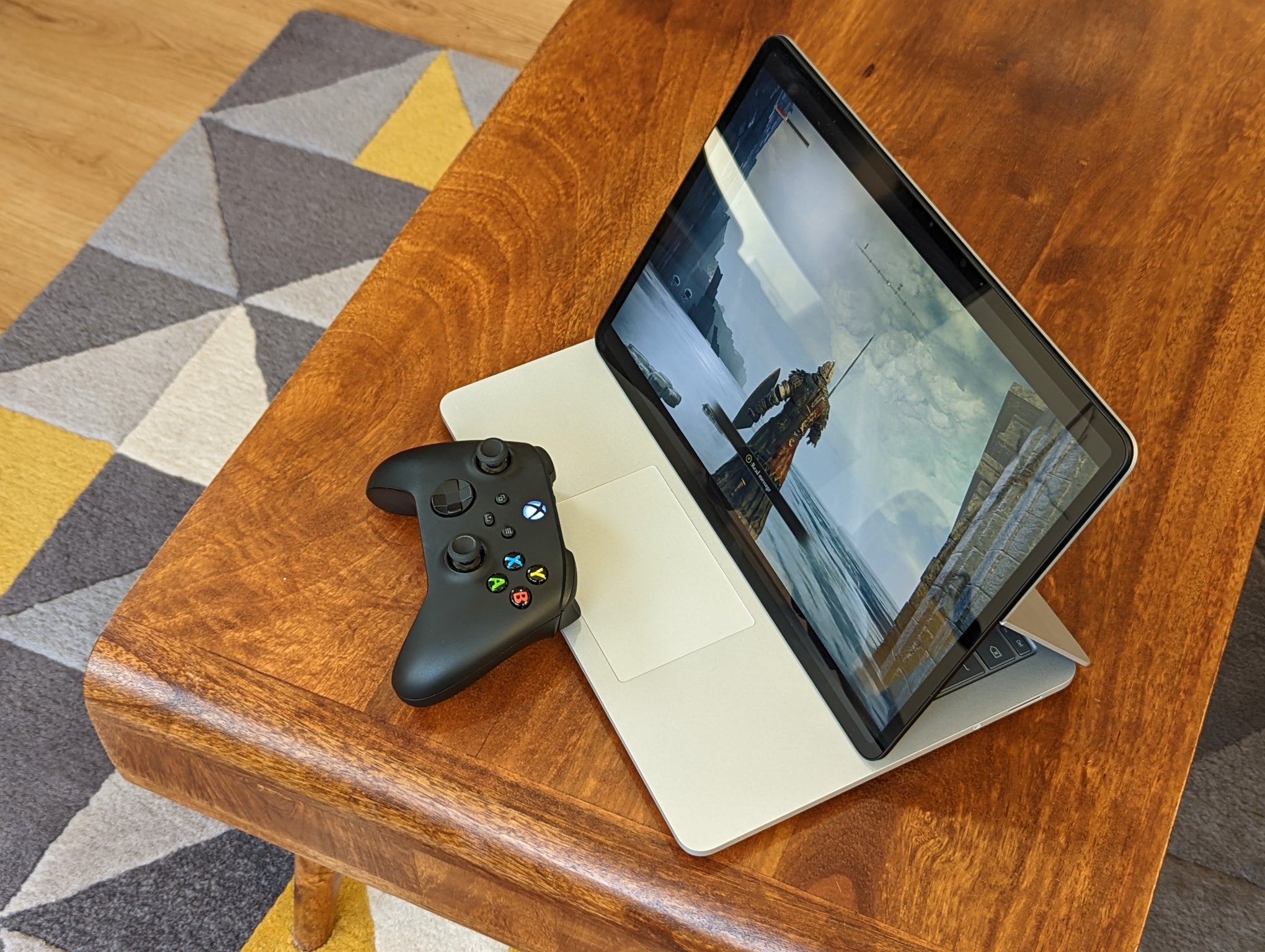
Underneath the keyboard are four speakers, which use the thicker size of the surface laptop studio to great effect. Whereas very thin laptops are prone to sounding weedy and directional, these speakers manage to produce deep bass notes and crisp, detailed sound – enough to watch movies and TV shows without reaching for your headphones. Microphone performance is especially good too and has been tuned for video conferencing, with notably clear audio to match the laptop’s high-quality, 1080p front-facing camera.
Performance and battery life
The surface laptop studio is a powerful device and comes in a few different configurations: a Core i5 model with integrated Intel Xe graphics, and a faster Core i7 model with a dedicated GPU. We tested the £2,559 configuration with the Intel Core i7 processor and Nvidia GeForce GTX 3050 Ti graphics. If you decide to pick up a surface laptop studio we’d recommend choosing at least the cheapest Core i7 model, which comes in just under £2,000. Anything less powerful than that and it makes more sense to go for a cheaper laptop with the same or better specifications, or the surface pro 8, a tablet that effectively features the same articulating touchscreen and stylus setup.
Read more: Steam deck review - a revolutionary handheld gaming PC
The surface laptop studio performs impeccably as a creative platform, and handily juggles Adobe tools without slowdown or excessive load times. We pulled in giant image files from online storage and used the Slim Pen 2 for airbrushing and touch-ups – the photography in this review was all edited on the surface laptop studio itself – and churned out test renders of 4K video files in Premiere. Editing multitrack audio in Audition was light work too, with export times for both audio and video files just a fraction of what our (admittedly ageing) desktop machine can manage. This is a laptop for users who need to push a lot of data around.
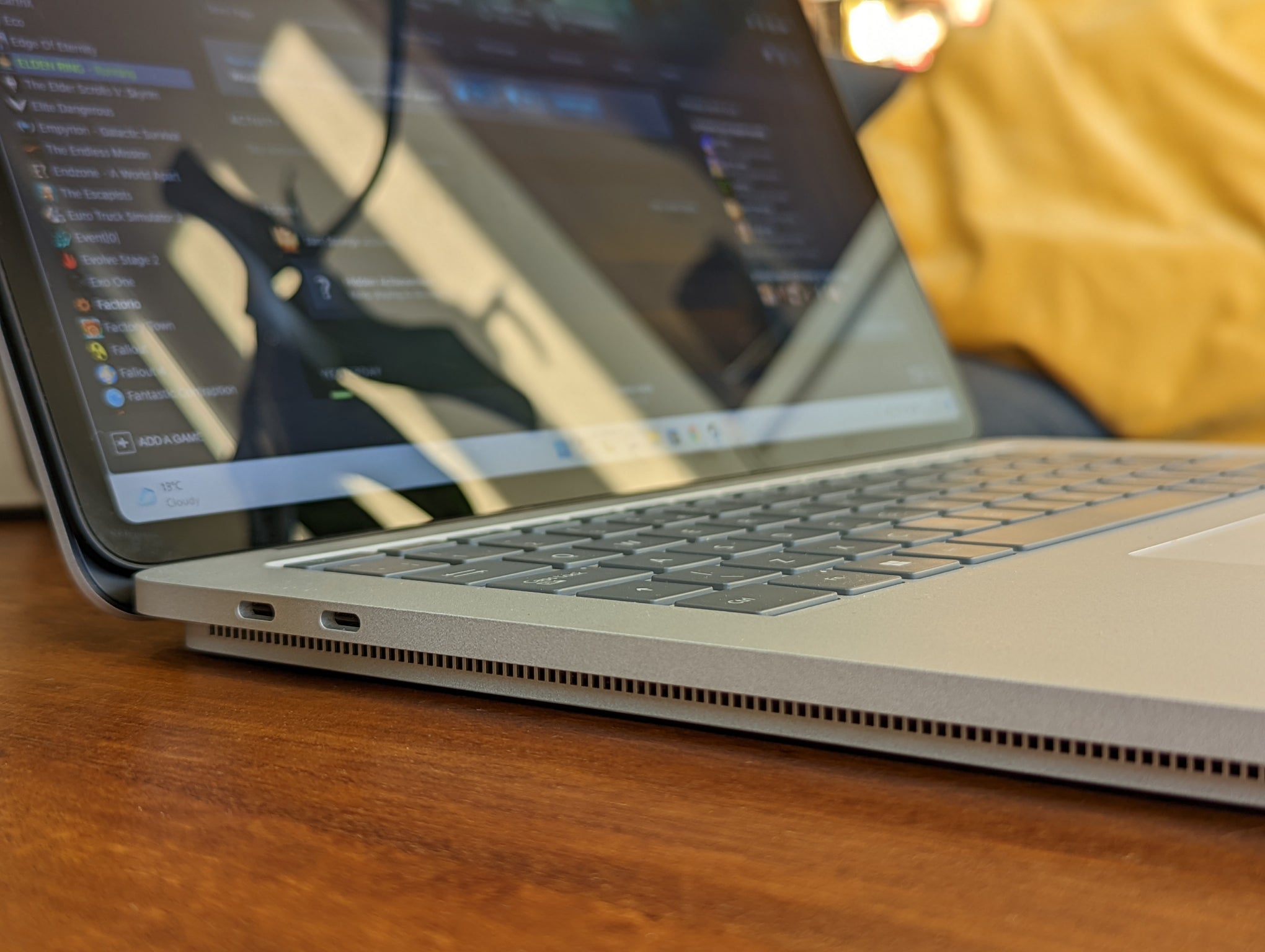
Microsoft’s convertible laptop isn’t a gaming-focused PC, but it’s perfectly capable of tossing around a few polygons. Drop the resolution down to something more sensible than the native 2400 x 1600 and you can enjoy a solid 60fps in games like Elden Ring and a smooth 120fps in less graphically demanding titles. There are more capable and cheaper gaming laptops out there, but it’s nice to have the option to dip into Forza Horizon 5 to distract yourself with a race every now and then. To that end, each laptop comes with one month’s access to Xbox Game Pass, the Netflix-style games-on-demand service.
Battery life is where things get shaky for the surface laptop studio. Forget your charger in the morning and, assuming constant use, the laptop will be running on fumes by the late afternoon. It’s possible to squeeze more juice out of the battery by dialling down the refresh rate to a standard 60Hz – which is buried in a settings menu and somehow isn’t automatically turned off when the laptop is set to battery saver mode – and by dropping the screen brightness. Windows 11 also helpfully recommends some settings changes to extend battery life if it estimates you’re going to run dry before you get to a charger.
We’ve been less concerned about laptop battery life in recent years, considering we’ve primarily been ferrying our laptops between the plug socket at home and the plug socket at the office. But with things beginning to return to normal, could the surface laptop studio let you take your work with you on a trans-Atlantic flight? We don’t think it would last until Greenland.
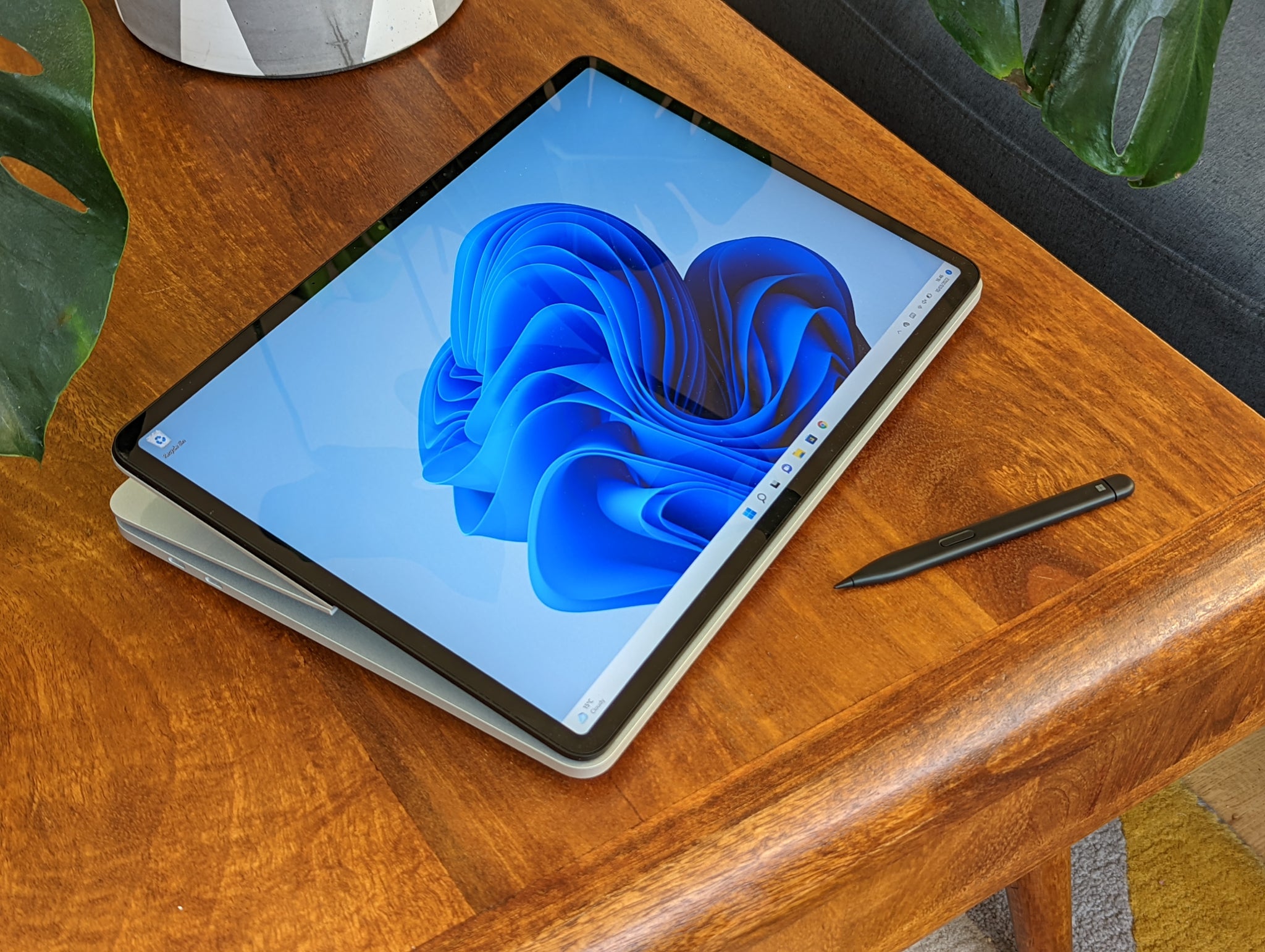
The verdict: Microsoft surface laptop studio
There’s a whole lot to love about the surface laptop studio. The clever articulated design solves a problem that’s plagued the surface range for years, by placing the laptop’s touchscreen somewhere it can be used comfortably, and all without having to completely detach it from the keyboard. It’s as powerful and capable as a MacBook Pro in everything but battery life, and when coupled with the Microsoft Slim Pen 2 it can do more than the rival Apple machine. The fluid 120Hz display is also one of the best screens on any Windows laptop you can buy.
But this is a device with some fierce competition. If it’s the form factor that truly excites you, the surface pro 8 (£849, Microsoft.com) starts from under £1,000. If it’s the processing power, you can find similar specifications in a Dell XPS 15 costing a few hundred pounds less (£2,198.99, Dell.com). The surface laptop studio is easily one of the best Windows 11 laptops out there, but an expensive proposition.
Voucher codes
For the latest discounts on laptops and other tech offers, try the links below:
Compare the best broadband deals with Independent Advisor
Unsure whether this is for you? Read our round-up of the best laptops you can buy in 2022
